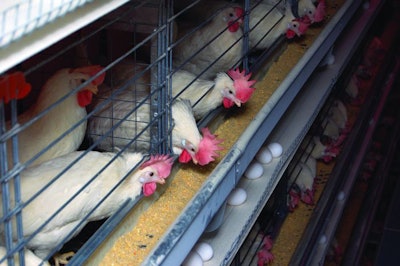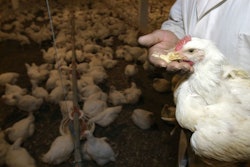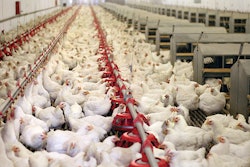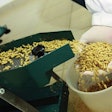
Greater attention should be given to 2 areas of research
In order to control calcium nutrition in layers, it is important to understand a typical daily calcium balance. This will be the basis for improving calcium precision intake and determining means to improve calcium digestibility, absorption, and availability – especially for aging hens.
For the purposes of our discussion, let us examine the daily balance of calcium intake and output in a layer hen at the middle of her production cycle. Under most commercial situations, she is likely to consume about 100 grams of a feed containing 4% total calcium (and no more than 0.4% total phosphorus). Thus, her daily intake of calcium is about 4,000 mg. The majority of this feed is consumed during the first hours after daybreak, whereas a small amount might be available during the rest of the day, depending on appetite and feed management practices. Feeding extra calcium during off hours only ensures enough calcium is available for eggshell formation during the night, but that is a different discussion.
From the 4,000 mg calcium ingested, the hen will lose in feces about 500 mg as indigestible. Here, selecting calcium sources with the highest digestibility will help minimize this loss as 500 mg is already 12.5% of total calcium intake. Lamentably, there is very little information regarding digestibility of calcium sources in hens. Another 400 mg calcium will be excreted through urine, whereas 100 mg calcium will be deposited to bone reserves, leaving about 3,000 mg for the egg. Of these, 2,000 mg will go to the eggshell and the remaining to yolk and albumen formation.
Bones act as a temporary reserve of available calcium being able to contribute no more than about 2,000 mg. Drawing more than that harms the structural integrity of the bones, causing leg problems. In addition, the hen that has to depend on her bone calcium reserves for too long will eventually cease egg production until such reserves are repleted.
In my opinion, there are two greater areas of research that need immediate attention, especially because egg cycles have been extended to 100 weeks – almost double compared with the not-so-distant past. First, we need to determine calcium digestibility in calcium sources, including major ingredients like corn, wheat and soymeal. Second, we need to continue investigating additives that improve calcium digestibility and absorption, especially for aging hens.


















